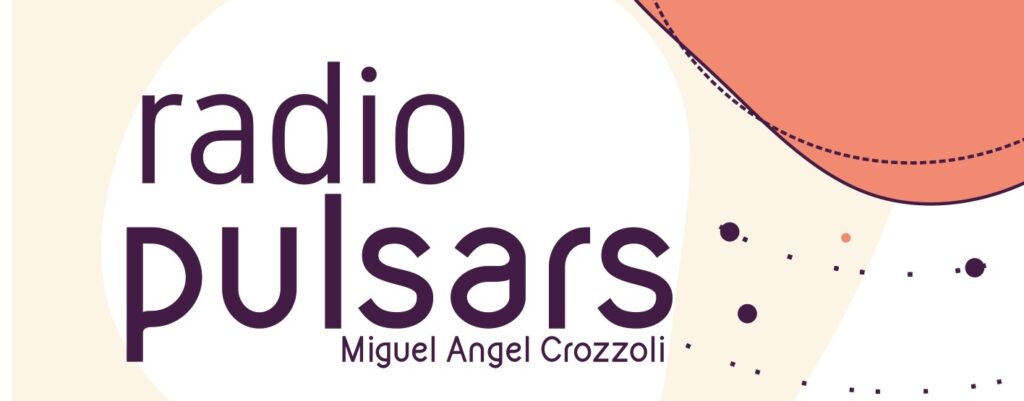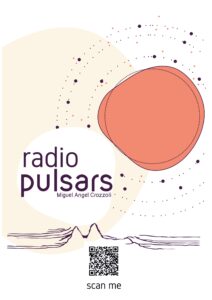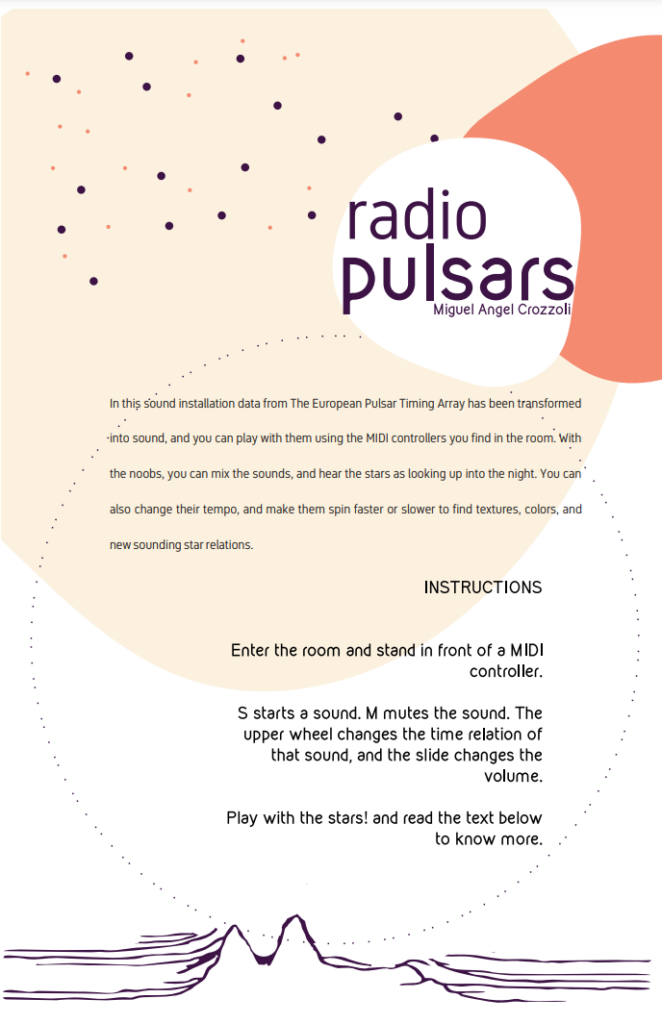
Materials. Raspberry pi. MIDI controller. Radio Pulsars Data Sets. Coding Langage. Supercollider
RADIO PULSARS (2020) an installation about Neutron Stars.
Inspired by the scientific sonifications from Jodrell Bank Observatory, Radio Pulsars was created as an etude, to study the interactive potential playfulness of scientific sounds through MIDI controllers. In this piece, I coded sounds mimicking the aesthetic quality of already-made pulsars’ sonifications from the Jodrell Bank Observatory. I used data sets from the European Pulsar Timing Array. I also programmed MIDI controllers to start and stop these sounds, and change the speed ratio at which the data is being read, which creates diverse and surprising sound artifacts.
In the installation, two MIDI controllers are positioned in front of each other. The participants enter the room, and by pressing buttons on the controllers, they play the sound of the stars. As a sounding result, complex and surprising textures and sonic movements are created, capturing the attention of the participants in a playful interactive environment.
Click to read and imagine how the sound installation is developed.
To perform this installation I need a dark room with four speakers. It is a very simple and very playful installation.

1. Entering the space. People scan a QR code to access an online PDF with an introduction, a set of instructions, and poetic and scientific texts about Neutron Stars.

2. Accessing the PDF. The QR gives access to this PDF, where the first page contains an introduction and instructions for the installation, and the second page is a scientific text next to a poetic reflection on deforestation to reinforce the message of the artwork.
3. Entering into a playful starry night. In the room, there are two MIDI controllers connected to a small computer. When the participant presses a button on the controller, the computer creates a sonification assigned to that button beforehand. The data of a star is transformed into sound, and by moving the knobs, the reading speed of data changes. This produces alterations in the outcoming sound, so what sounded percussive is transformed into strange melodies, allowing small nuances to be amplified by our curious interaction!
4. (in)Between the sounds of science. the sounds of this installation are the same as the ones used in scientific research, but with the MIDI controllers, a bridge is created to travel between the scientific and interactive potential of sonifications.
Below is an audiovisual representation of scientific sonifications, and ->
to the right is a playful moment from participants at the installation.
The interactive potential of scientific sonifications
Check out more Participatory Sound Installations HERE